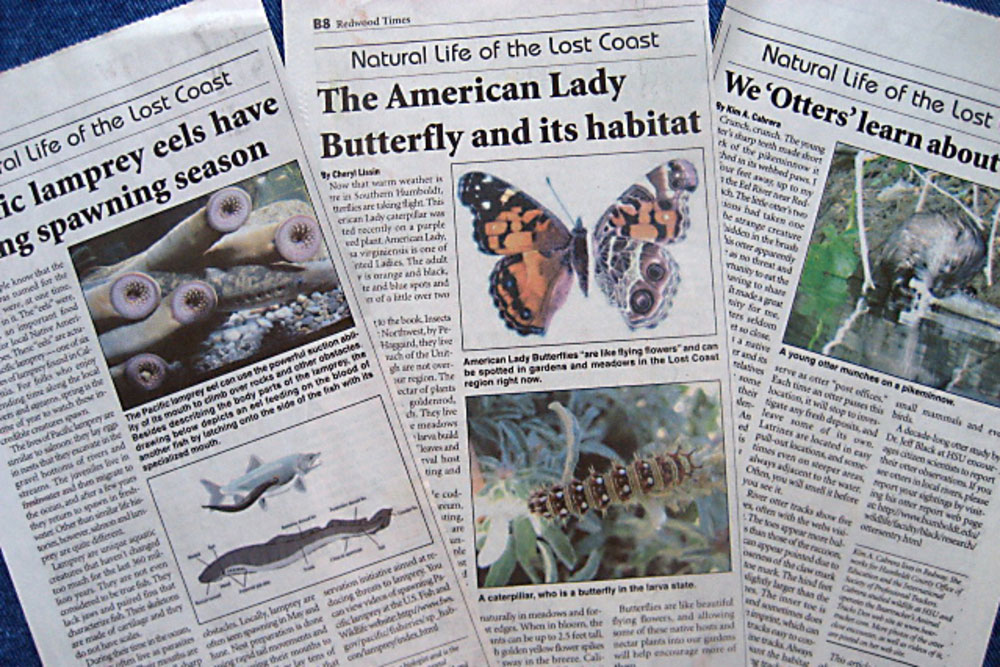Natural life of the Lost Coast: Seal or Sea Lion?

By Eve Broughton You are walking on the beach. There is a dark head poking out of the ocean watching you. What is it? Does it have external ears? If not, it is a seal. Sea lions, which tend to be less curious, do have external ears. There is another large difference between seals and sea lions. While both have streamlined bodies adapted to aquatic life, the seal has gone further down this path. Its pelvis is greatly reduced and its thigh bone (femur) is gone. As a consequence, the seal is very clumsy on land; it has to pull its body along using the front flippers. In the water, they swim by undulating their bodies and using their rear flippers. The sea lion still has a femur (small), and a functioning pelvis, so it can bend its rear end beneath its body to walk on land. Their front flippers are larger than those of seals, and are used to propel themselves underwater. The flippers are modified hands and feet; the fingers and toes are long and webbed together. Seals have claws on their front flippers, sea lions on the rear. Sea lions are also more playful; they perform in zoos and circuses balancing balls on their noses. They are very social and vocal; the barkers you hear are sea lions. Seals, sea lions and walruses are all pinnipeds and evolved from a bear-like ancestor around 23-24,000,000 years ago, (DNA evidence). The earliest fossil pinniped (Pujilla darwini) found in northern Canada, dates from slightly later. Pinniped lungs are adapted to the increased water pressure when diving. The airways of the lungs are lined with smooth muscle and cartilage. An anti-adhesive fluid lines the air sacs, so that even collapsed lungs can re-inflate. The nostrils shut when underwater. They can hold their breath almost two hours, as the heart slows down and blood is sent only to sense organs and the nervous system. Another aquatic adaptation of all pinnipeds is blubber: a thick layer of fat beneath the skin, which helps to create the streamlined body, provide buoyancy, store energy, and protect against the cold water. Their eyes are covered with a clear protective membrane, so they can see well underwater. They see in color, although just the blue to green range. Their underwater hearing is also fairly acute. Seals and sea lions swallow their prey, fish and squid, whole. Their teeth are simple pointed cusps, used to grasp the slippery food. Both come out of the water to give birth and mate soon after, and to molt (shed old fur and grow new). Seals give birth in April and May, sea lions in May and June. Seals nurse for only four to six weeks, sea lions for over a year. Seal milk is very rich in fat, so seal pups grow rapidly. Both seal and sea lion mothers will leave their pups on the beach while they go on foraging expeditions, sometimes many miles offshore. Eve Broughton was educated at UC Berkeley, and lives in Whitethorn. This article is part of a series about natural life on the Lost Coast, sponsored by the Friends of the Lost Coast, which may be contacted at [email protected].]]>
